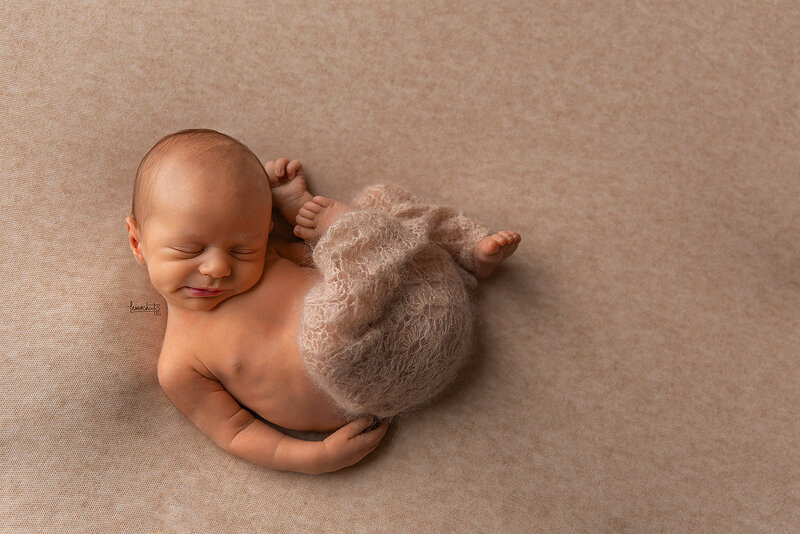What Babies Experience During Birth
I spend my days taking photographs of pregnant women and their newborn babies. As a result, I’ve heard dozens of labor and delivery stories, and I’m always fascinated and inspired by them. While the general process may be “the same,” every woman’s birthing story is her own and remarkably unique.
Also, I’m very present to the fact that the nearly 100 babies I’ve photographed have their own birthing experiences, too. They simply don’t have the words to tell us about it.
Birth From the Baby’s Perspective
The world of medical imaging and sensitive testing instruments means we have greater insight into what’s going on for baby from the time his/her mother begins going into labor. It’s the baby, after all, who calls the shots, since labor-triggering hormones are typically catalyzed when the lungs are fully formed and able to breathe outside of the watery environment they’re accustomed to.
After that, a myriad of events unfold for babies...
Compression in the birth canal
Experts are not clear whether babies experience pain in the birth canal or not. They expect that notable pain isn’t likely because, while some babies do cry at birth, many do not.
What is undeniable is that babies feel lots of pressure (understatement), and that pressure probably alternates between comfortable, uncomfortable, and highly uncomfortable, depending on the intensity of the contractions. That being said, their tiny bodies are incredibly flexible and already accustomed to tight spaces, so their bodies are built such that most babies complete the journey unscathed.
Extreme changes in the skull
There’s a reason why babies have soft spots and a malleable skull when they’re born. MRI imaging performed on babies in the uterus - and then inside the birth canal - as well as physical observations directly after birth demonstrate the dramatic changes that occur for the skull.
Imaging shows us that the individual plates that make up the skull (and fuse more solidly as we grow), smush together and actually overlap one another to fit through the canal and the mother’s pelvic bones. Then, they rearrange again once the baby’s head is out. This is why some babies look more pinched or cone-headed immediately after birth - often the result of spending an extended period of time in the birth canal.
Large, surges of oxygen
You probably know that babies receive everything they need in utero via the umbilical cord - and that includes oxygen. Developing infants require very little oxygen while they’re in the uterus, but that need increases exponentially once they’re born. Even so, an abrupt transition from lesser-oxygen to more can be shocking - and even fatal - for a newborn.
To help the newborn transition better, the lungs expand rapidly and significantly to accommodate the breath and increased oxygen flow. Also, medical researchers are finding the neonatal jaundice may actually be a newborn’s self-protection mechanism, protecting the newborn’s system from sepsis that can occur as it’s organs transition from in-utero organs to “real world” functioning organs.
A continued relationship with the placenta
Until recently, mainstream labor and delivery teams cut the cord fairly quickly after a baby was born, not realizing that it was depriving the newborn of the blood supply remaining trapped in the now disconnected placenta.
This is a very different practice than most midwives have adhered to. They recognized that the pulsing cord was a sign that the baby was still in transition and benefitting from the nourishing, toxin-cleansing cord and placenta.
Now, most hospitals and birthing centers also practice “delayed cord clamping,” largely the result of ACOG’s revised standards in 2012 stating, “While there are various recommendations regarding optimal timing for delayed umbilical cord clamping, there has been increased evidence that shows that the practice in and of itself has clear health benefits for both preterm and term infants.”
Twisting and turning through the canal
The large majority of the time, babies do a bit of twisting and turning as they move through the birthing canal.
First, s/he presses her head further and further against the cervix, causing it to dilate.
Next, the baby twists and turns, moving as much as possible to ease the head and shoulders’ way through the canal (your alternating positions from sitting to standing, on all fours, or maneuvering in the birthing tub are really just unplanned choreography for the spontaneous dance you and the baby are performing together).
Finally, when the widest part of the baby’s head is through the canal, s/he’ll twist yet again, arriving face-down into the hands of the person catching him/her.
Of course, there are always exceptions to the rule. This includes the 1 out of every 20 babies that are born “posterior-facing” or “sunny-side-up” facing the baby catcher, the 3% to 5% are born breech (feet or rump first), and the 21% of babies who are born via C-section.
Birth canal as pump
While all that contracting and presumed pressure on the newborn may not feel ideal, rhythmic contractions of the uterus, and the ensuing squeezes of the birth canal, yield more benefits than simply moving a baby physically along its way.
Those contractions and squeezes help to pump the heart and lungs, preparing them for their imminent new tasks when they emerge. The compressions also help the baby expel amniotic fluid, which is why babies delivered by C-section often have “wet lung” breathing faster and shallower until the fluid is absorbed.
Wow! Mothers and babies deserve the ultimate care and respect after all the hard work they go through for one another. Why not reward the new mother and baby in your life by giving them the priceless gift of a newborn photography session?
Contact me, Marcela Limon, at Lemonshoots, (510) 747-9019. I promise to create award-worthy images that stand the test of time and prove all that hard work was worth it.


